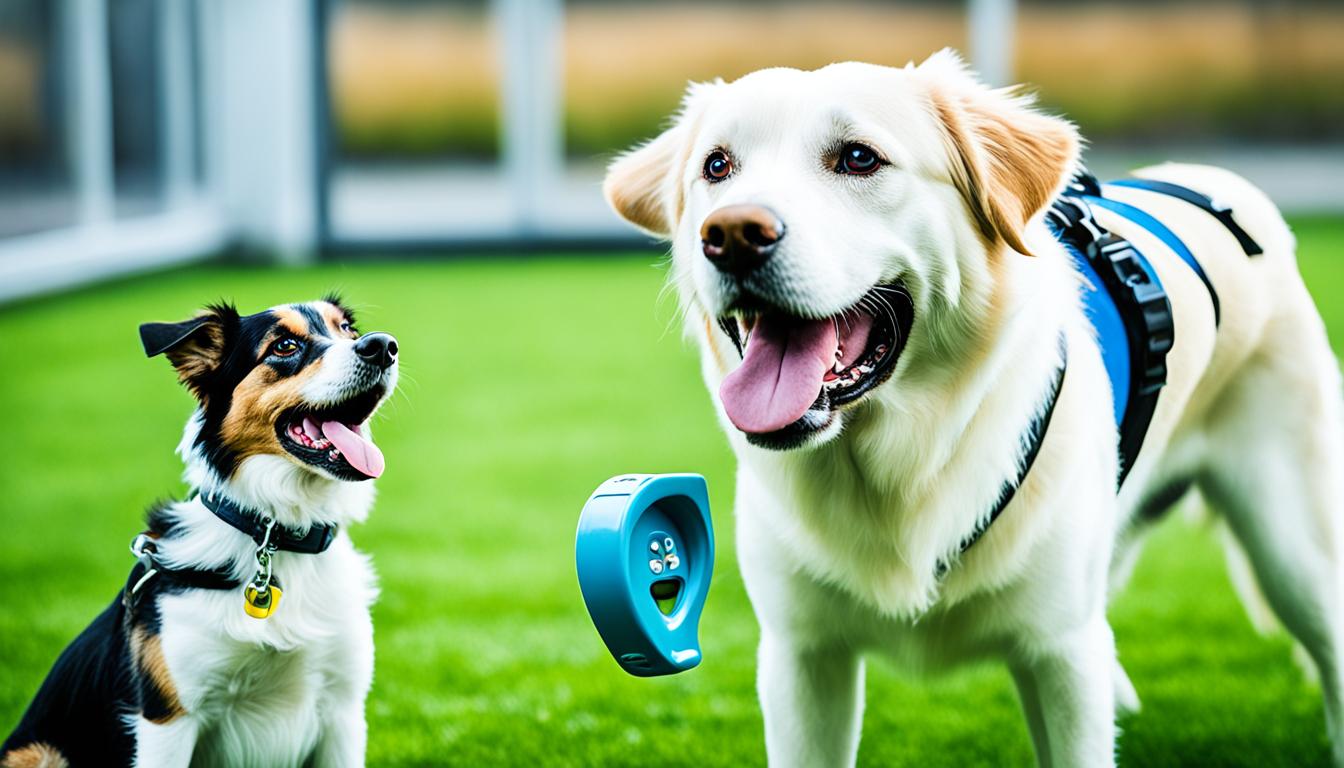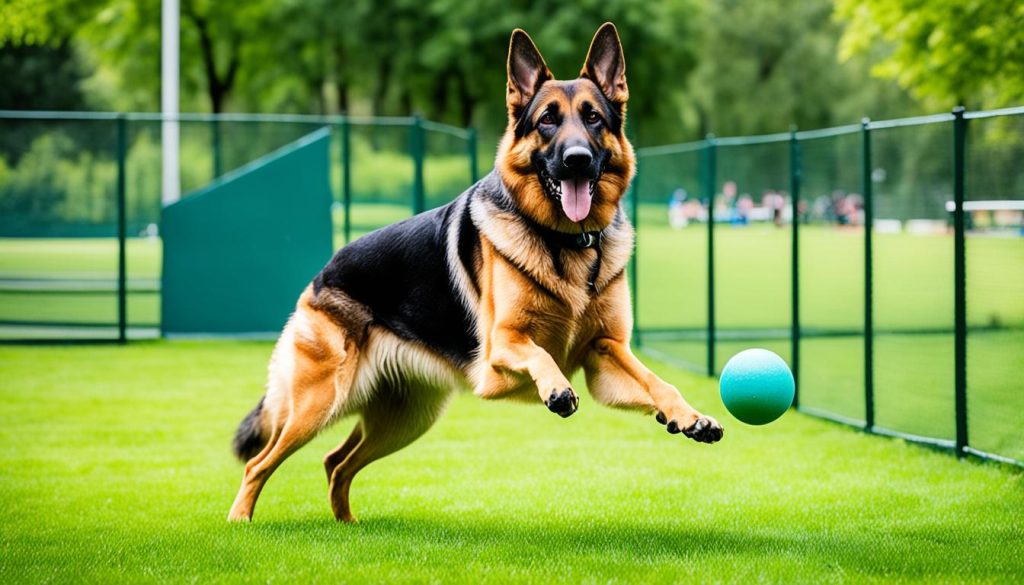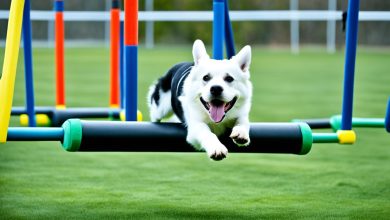
Training your dog opens up their world and strengthens your bond. It’s vital to know the different methods out there. This knowledge lets you pick what’s best for your pet’s happiness and health.
Operant conditioning is a key method in dog training. It changes a dog’s behavior using rewards and consequences. This approach uses four main tactics: positive and negative reinforcement, and positive and negative punishment. It offers a complete system for teaching.
Positive reinforcement rewards good behavior. Negative reinforcement removes something unpleasant. Positive punishment adds something unpleasant, and negative punishment takes away something good.
Dog training has many methods, but outcomes vary. Reward-based training focuses on building positive habits by rewarding what you want to see. This makes your dog happy and strengthens your connection.
On the flip side, punishment-based techniques use positive punishment to stop bad habits. But, these can hurt your relationship with your dog. It’s best to use balanced training methods. These mix all four operant conditioning tactics but favor kind, reward-based strategies.
Key Takeaways
- Operant conditioning is a behavioral learning process that utilizes four quadrants to shape and modify a dog’s behavior.
- Positive reinforcement involves rewarding desired behaviors, while positive punishment adds aversive stimuli.
- Reward-based training methods create a positive association with desired behaviors and enhance the owner-dog bond.
- Punishment-based techniques can have negative side effects and strain the relationship between the owner and dog.
- Choosing balanced training methods that prioritize force-free, reward-based techniques can minimize the potential negative consequences of punishment.
Choosing the Right Dog Training Near Me
Choosing the right dog training service is key for your pet’s growth. It’s essential to use positive reinforcement and find custom training plans. This ensures your dog gets the care and guidance needed.
Positive reinforcement techniques help your dog feel loved and secure. These methods reward good behavior, which helps your dog learn better. Choosing trainers who use these methods builds trust and motivation in your dog.
Personalized training programs are important because every dog is unique. A program that suits your dog’s needs improves learning. It makes training more effective and enjoyable for your pet.
“Positive reinforcement techniques create a nurturing and loving environment for your furry friend.”
When looking for dog training, do your research. Find trainers that use positive reinforcement and customize their approach. Recommendations from those you trust can also guide you to the right service.
The right training service can unlock your pet’s potential. Choose a provider that uses positive reinforcement and custom programs. This choice will help your pet learn better and strengthen your bond.
The Benefits of Board and Train Dog Training
Board and train programs have many benefits for dogs and their owners. They take place in specialized facilities, led by expert trainers. Dogs learn quickly in these focused environments.
These programs are great for fixing behavioral issues. Trainers work closely with dogs, spending much time on behavior change. They use positive methods, like rewards, to encourage good behavior.
Board and train programs also help dogs socialize. Socializing is key for a dog’s growth. It makes them more confident around other animals and people.
However, these programs mean less time with the owner. Dogs stay at the training facility. This separation might affect the bond between the dog and its owner.
But there are other options. Group classes, private lessons, or online courses let owners be more involved. This involvement strengthens the bond and helps reinforce training at home.

To sum up, board and train programs provide focused and effective training. They target behavior issues and social skills. Yet, it’s vital to think about how much you want to be involved. Other training methods may offer more chances for you to connect with your dog. The best choice depends on what’s best for you and your dog.
Conclusion
Dog training is key to the happiness and well-being of our pets. It’s important to choose the right training methods. Factors like positive reinforcement and personalized programs play a big role.
Tailoring training to each dog’s needs is crucial. This builds a bond based on trust and respect. It also ensures their training fits their personality.
As dog owners, we must be dedicated to their training. Putting in time and effort improves their lives and our bond. This commitment leads to a happy life together.
FAQ
What is operant conditioning?
What are the four quadrants of operant conditioning?
What is positive reinforcement?
What is negative reinforcement?
What is positive punishment?
What is negative punishment?
What are reward-based training methods?
What are punishment-based training methods?
What are balanced training methods?
What is the recommended training method?
What should I consider when choosing a dog training service?
How do board and train programs work?
What are the benefits of board and train programs?
Are there alternatives to board and train programs?
Why is dog training important?
What is the ultimate goal of dog training?
Source Links
- https://www.theacademyofpetcareers.com/blog/dog-training-methods/
- https://medium.com/@yasimarin038/discover-the-best-dog-training-near-you-unlocking-canine-potential-ccbb3597744e
- https://www.linkedin.com/pulse/unlocking-potential-board-train-dog-training-guide-ibadot-biraj-wrzgc




